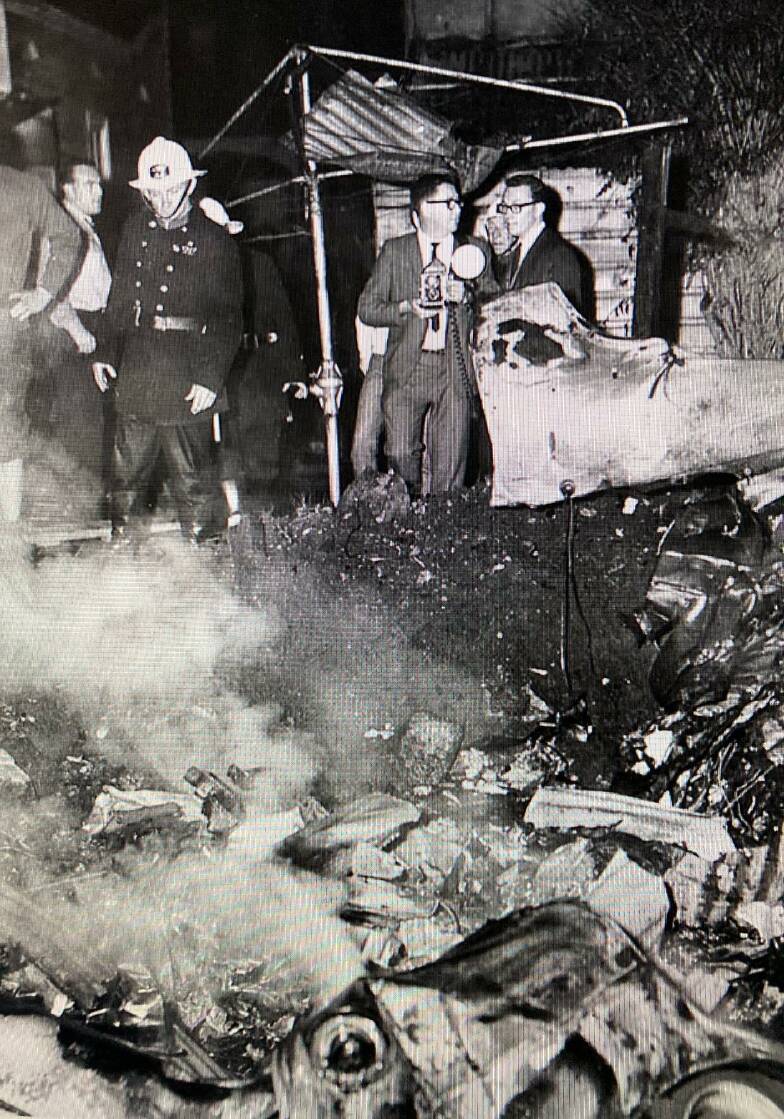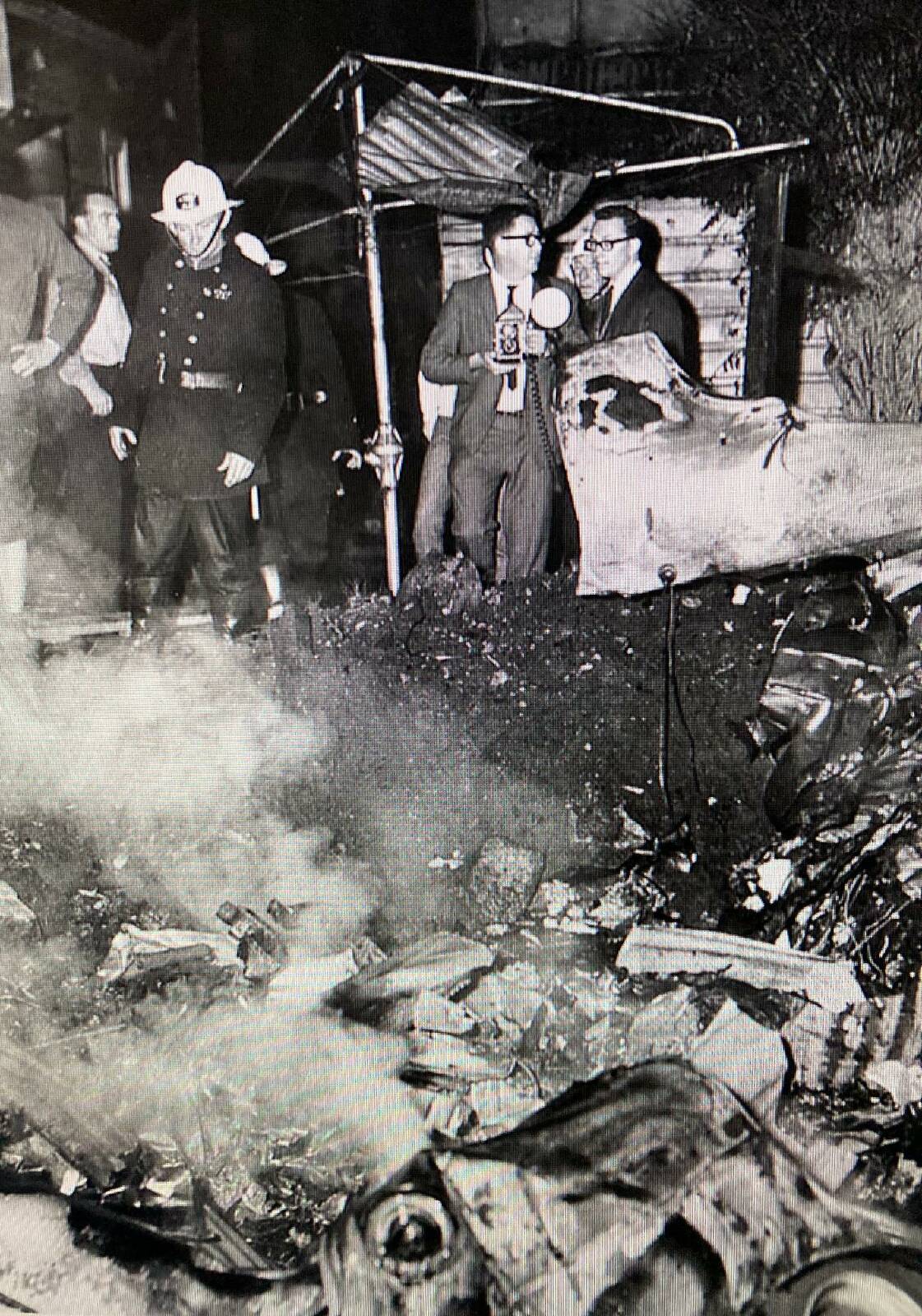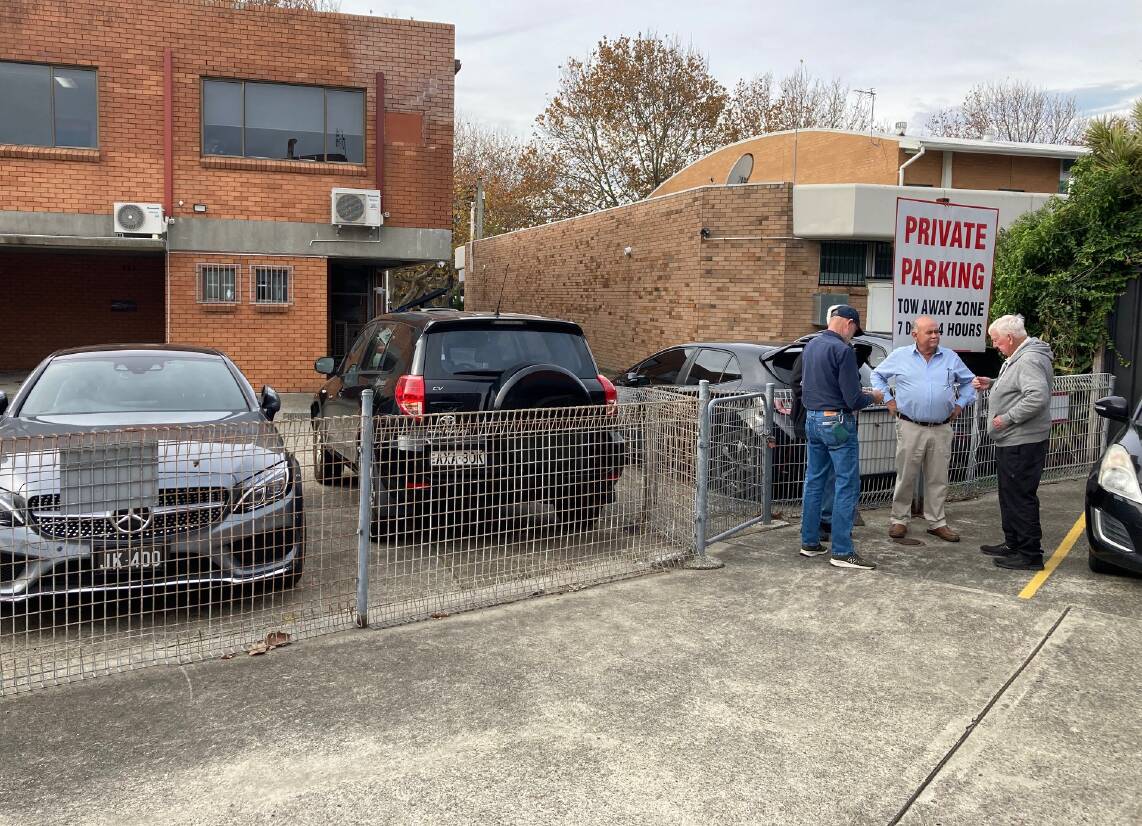
ON a cold, wet winter evening almost 57 years ago, all hell suddenly erupted over The Junction, a densely packed inner-Newcastle suburb.
At first there was a blinding flash of light, a huge noise, then fire seemed to rain down on streets around Glebe Road near The Junction war memorial.
There was immediate mayhem. Amid the confusion, a reported 100 police and firemen descended on the scene to restore order and put out spot fires, including on the tarred surface of Glebe Road. It was Tuesday, August 16, 1966.
An RAAF Sabre jet fighter on normal night manoeuvres had exploded over the suburb. The pilot was hurled through the roof of a house nearby and died instantly.
By some miracle, the trainee flyer, Pilot Officer Warren Goddard, 20, of the Perth suburb of Como WA, was the only fatality. On the ground, three other people were taken to hospital, two with shock while another felt a 'terrific blow' on the chest after being hit with metal debris. He complained of being hit with something really hard, asked for a brandy and soon collapsed. Firemen battled small fires up to a kilometre away.
Witnesses said the explosion occurred about 6pm in constant rain when the single-seater, single-engine RAAF fighter disintegrated about 300ft (91m) in the air. Windows and crockery in hundreds of houses shattered as far as three kilometres away.
A flaming wing of the Sabre jet (with wheel attached) flew about 80 metres from the major crash site to land on Union Street outside the then Coles (New World) supermarket, narrowly missing houses opposite.

Police at the time were stunned that no civilians were killed. But, by some extraordinary luck, the bulk of the military airplane had plunged to earth in the empty middle of the large triangular block bounded by Glebe, Union, Kenrick and Corlette streets. The blast was heard five kilometres away.
The Sabre jet had exploded above backyards of houses and shops in Glebe Road and Kenrick Street before plummeting to earth. Flaming wreckage crushed flat and almost buried a 1956 Ford Customline car in a two-metre deep crater. Only minutes before, its driver, Kenrick Street resident Keith Johnstone had arrived home. He parked his car and was about to head out again when the jet engine ploughed into his backyard, crushing his laundry and garage.
Shrapnel peppered the weatherboard houses and about 60 homeowners were to lodge damage claims. Initial inquiries indicated Sabre jet pilot Goddard was hurled through the roof of the Glebe Road house after his ejector seat failed to operate properly.
It seemed Goddard had experienced engine trouble in cloud and was unsuccessfully trying to ditch his aircraft in the nearby Pacific Ocean when disaster struck. The late pilot officer soon emerged as the hero of the air disaster, trying to manoeuvre his jet away from homes.
His Sabre jet, emerging from cloud, was seen to be diving at a low altitude seconds before the accident. It even skimmed above a three-storey block of Housing Commission units before exploding.
About 40 years later, a retired Williamtown RAAF squadron leader said the trainee pilot was doing his first night flight. He'd gone into a barrel roll to get out of trouble, but basically ripped the wings off.

If the aeroplane was flying upside down, it might explain Goddard's tragic end, crashing through the roof of a Glebe Road house. The pilot's ejector seat was found in an alley off Glebe Road between the yard where a large jet part ploughed into the ground and the house in which the pilot fell.
"I believe the pilot saved lives by trying to avoid houses," Mark Williams, of the Williams Junction Bakery family, said on site recently.
At the request of key members of Merewether Historical Society, he'd kindly agreed to conduct a small tour of the accident scene for more insights into the air tragedy.
"I was on arvo shift back then at BHP when I got a phone call a plane had just crashed at The Junction," he remembered.
"I think Goddard's aircraft was part of a flying group that evening. A large part of the aircraft came down in a backyard a few shops behind what is now Talulah's cafe near the war memorial.
"It was the area behind where the National Bank used to be (in Kenrick Street). What happened I think was the plane at the end was gliding, then just stopped, the pilot ejected and it went down."
Williams said as aircraft debris rained down, most of the fuselage bounced and went straight through the front bedroom of a house on the south side of Glebe Road, virtually destroying the premises. On the opposite side of Glebe Road, the RAAF pilot then crashed through a house roof.
"From what I heard, the pilot came through the house attic and was left hanging upside down apparently," Williams said.
He thought people had been living in the house and were having dinner when they heard a 'thump' and went upstairs to investigate. Another of the jet's long wings came to rest in the rear carpark of the then much smaller Coles supermarket fronting Union Street.
Today The Junction remains one of inner-Newcastle's smaller suburbs, sandwiched between Cooks Hill and Merewether. And while much of it has been redeveloped since 1966, including Williams Bakery and stables where the Hunter Village now stands, some of it is still relatively intact.
Strangely enough, one 'Old Junction' remnant includes the 1966 Sabre Jet crash site, now concrete carparks where backyards once existed. Back in 1966 and even now it remains the only large empty space in the whole triangular block.
The Junction air crash followed another Sabre jet crashing at Mayfield in 1963.
Soon after The Junction incident, a coroner found no one was to blame for that crash. The 11-metre jet fighter was a heavily modified version of the North American F-86 Sabre that first saw combat service in the early 1950s Korean War.
Of the 112 Avon-Sabres built for the RAAF, only two may be airworthy today. One Hunter static display though was in Bettles Park at Raymond Terrace for 31 years until 2013. The aeroplane was moved to Williamtown's Fighter World for restoration and display.
On August 16, 2007, a plaque honouring Goddard was installed in the pavement at the foot of The Junction's war memorial.
To see more stories and read today's paper download the Newcastle Herald news app here.







